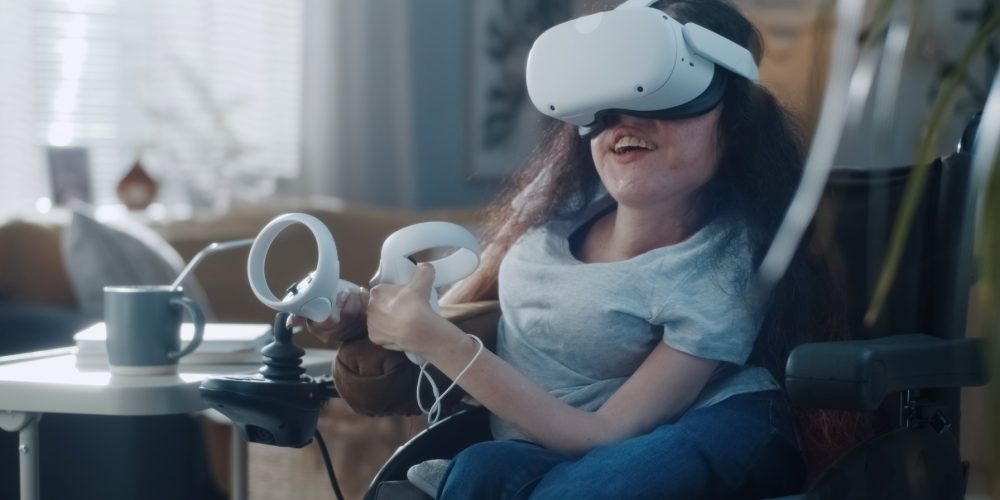By Vanja Garaj, John Dudley, and Per Ola Kristensson
The invention of the world wide web in 1989 eventually brought about life-changing tools for everyone who can access it. Some of these tools, such as online banking, shopping and communication, have vastly improved the accessibility of daily life for people with disabilities, as well as older people.
The concept of virtual mobility has long been used to describe how the internet can provide an accessible alternative to activities that usually require physical mobility. Virtual mobility was in full swing during the pandemic, as work, entertainment and socialising efficiently moved online. The metaverse – the next phase of the internet powered by virtual and augmented reality (VR and AR) – has the potential to take things even further.
Working with Meta, the Royal National Institute of Blind People and other inclusive design-focused partners, our team of researchers will be investigating the potential of the metaverse to introduce life-changing benefits for disabled and older people, as well as developing solutions to improve its accessibility and inclusivity in our new project Towards an Equitable Social VR. Here are five areas where the metaverse could take virtual mobility to the next level.
—
Continue reading here: Five Ways The Metaverse Could Be Revolutionary For People With Disabilities

